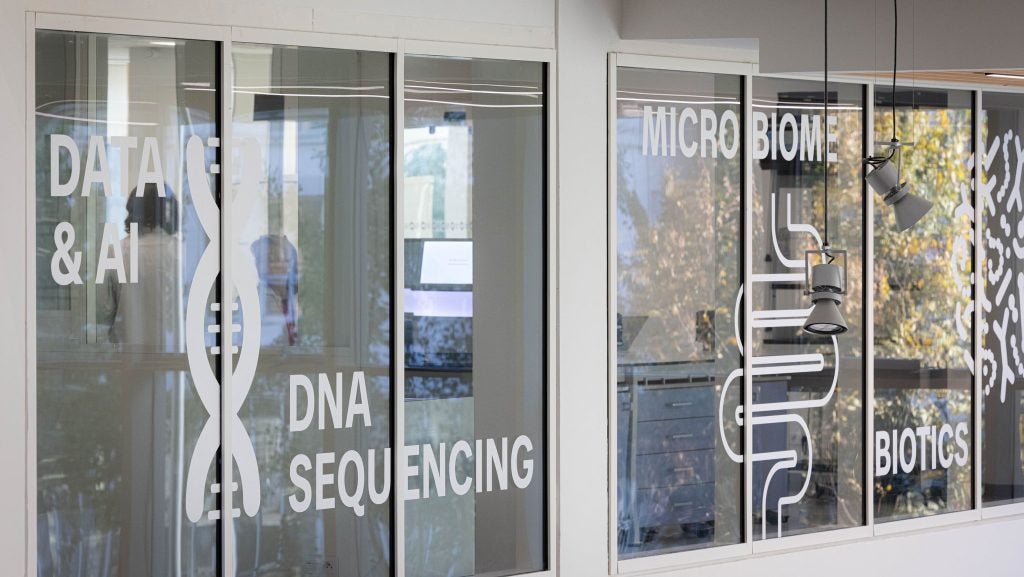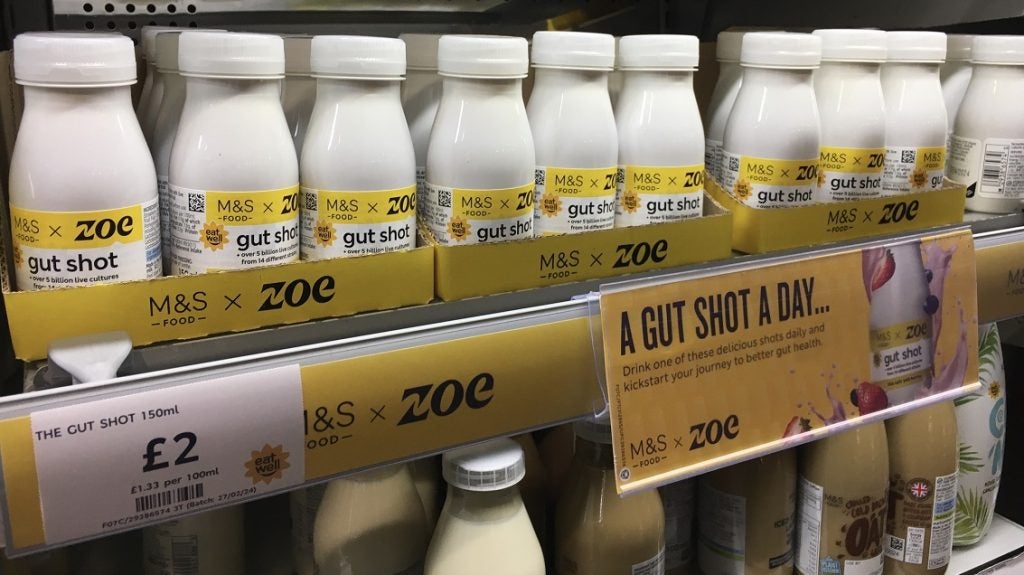
I’m a 50-something year-old male. I don’t have any children and I don’t know anyone who has young children. As a result, I have never bought or searched for baby care products. So imagine my surprise when I received a marketing email the other day from a large e-commerce retailer advertising a new, state-of-the-art, ‘hands-free’ breast pump.
The following day I received another marketing email from the same company advertising a range of baby products. I have no idea what triggered the original email. Perhaps the second email was sent because I opened the first message. What is clear is that when it comes to personalised marketing messages, retailers still have a lot to learn.

Discover B2B Marketing That Performs
Combine business intelligence and editorial excellence to reach engaged professionals across 36 leading media platforms.
Indeed, when it comes to personalisation full stop, the FMCG sector has much room for improvement. Some major names may have successfully executed the odd, large-scale customisation of products – a good example being Coca-Cola’s ‘Share a Coke’ campaign – but the industry has struggled to offer a truly personalised experience at scale.
Over the past decade or so, the food industry has flirted with personalisation in lots of different areas. Personalised nutrition was a hot trend around in the late 2010s, with much of the activity driven by companies like DNAFit and Habit.
Many of these businesses undertook tests to map the DNA profile of consumers and came up with personalised recommendations of what people should eat.
A number of start-ups that launched either failed completely or failed to scale but Hamish Renton, the CEO at UK-based consultancy HRA Global, thinks there is still scope for personalised wellness to gain traction.

US Tariffs are shifting - will you react or anticipate?
Don’t let policy changes catch you off guard. Stay proactive with real-time data and expert analysis.
By GlobalData“So, if you want niacin with zinc and magnesium – because you’ve done a test and you know that’s what you’re short of – and you only want to take one tablet, there are companies out there that allow you to order this personalised vitamin and they will effectively 3D print them and send them out to you,” Renton says. “But this approach still relies on somebody telling them what they need. What these companies haven’t done yet is do the testing on the one hand and then deliver the personalised vitamins.”
Renton thinks this is an area that could see some development. “Gummies would be a good platform for this because a lot of these supplements taste disgusting and if you stick something in a sugar syrup you can hide the taste,” he adds. “I’ve also heard whispers of people trying to do this in bars, where a manufacturer takes a base bar, like a chocolate bar or a protein bar and then in the top casing you would add some of the ingredients that are specific to your needs. The issue you need to consider is your route to market. You can’t go via the supermarkets because you can’t offer a one-size-fits-all product.”
Growing interest in the microbiome
The barriers to entry are high, which is why the secret to unlocking this market could lie in the hands of the large food groups themselves.
Earlier this month, Danone opened its OneBiome Laboratory in France, which, the Activia maker says, will be a “global hub for microbiome science, nutrition and digital health”.
The site, Danone added, will “support the development of targeted nutrition solutions through the use of advanced microbiology, AI and data science”.
Isabelle Esser, Danone’s chief research and innovation officer, says, there is “an increasingly strong link between health outcomes and the microbiome”.
She admits research remains in its early stages (“we’re still uncovering the extent of these connections”) but says the microbiome “appears to play a significant role” in conditions like Type 2 diabetes, Crohn’s disease, inflammation “and even mental health”.
And Esser suggests products could be developed based on someone’s microbiome. “Today, the microbiome is emerging as a form of health capital. Depending on an individual’s unique microbiome and health profile, tailored products will become available – whether to support, maintain, or restore microbial balance. Consumers are seeking better health and that increasingly means nurturing a resilient, diverse microbiome,” she says.
“As scientific research accelerates, we can expect a surge of products claiming microbiome-related benefits. The gut microbiome is rapidly becoming a central focus in the health and wellness market, and its importance will only grow as our understanding deepens.”

UK-based Zoe markets a range of personalised products and advice to promote good gut health. Professor Sarah Berry, the company’s chief scientist, says personalised nutrition can go further than most people imagine.
“Right down to your unique biology, your daily routines and even the timing of your meals or the order you eat things in,” she explains. “Whilst there are fundamentals that apply to everyone, such as to eat more fibre, in many instances we need to move beyond one-size-fits-all advice, because people’s metabolic responses to the same food or meal can vary dramatically. We can already tailor guidance using your gut microbiome profile and lifestyle factors such as sleep, activity levels and how we eat our food (e.g. time of day, eating speed).”
Berry adds in the future companies will also look to integrate information from wearable devices that track how people sleep and their activity levels to provide even greater levels of personalisation. “This is a particularly exciting area – making scientific research useful and practical in our everyday lives.”
Most of the large food manufacturers contacted by Just Food for this article declined to comment on the work they are conducting in the area of personalisation. Nestlé has trialled a number of initiatives in the past and says it is exploring opportunities – and not just in human food.
“Nestlé is focused on personalising the consumer experience, including using data and AI,” a spokesperson for the company says “That includes suggesting products, services and content based on consumer preferences and interacting with consumers through our channels and platforms. Examples include giving personalised recipe and nutritional advice linked to various brands. In pet care, for example, our Petivity system uses smart devices, at-home health tests and analytics to help uncover hidden health insights into pets, that can then be shared with vets.”
True personalisation will be difficult
The key to more precise personalisation is data. The more data companies hold on customers the more accurate and bespoke the advice will become.
As Berry explains: “At Zoe, we started with around 1,000 people in our first ever piece of research on people’s responses to foods and now we run the world’s largest nutrition study. We’ve even mapped over 300,000 microbiomes. All of this extensive research has allowed us to provide deeper insights, such as our new gut bug clusters, which is a unique and exciting way to personalise recommendations further, based on each person’s microbiome.”
Berry believes personalisation at scale is possible in the area of nutrition. “We’ve been able to reduce the cost of our personalised guidance, making it accessible to many more people,” she says.

However, creating personalised food products will remain a challenge for large manufacturers because it’s very difficult to cost effectively segment at scale.
As a result, Cyrille Filott, global consumer foods strategist at Rabobank, thinks we might see the growth of “hyper segmentation” in the future.
“For example, I’ve had many discussions with food companies about whether or not they should bring out food products for people who are on Ozempic, so GLP-1 users,” says Filott. “Is it personalised? Not really but these foods might appeal to you, because you might be on Ozempic. The balancing act is always going to be how can you manufacture at scale because one-on-one is not scalable.”
It’s a view shared by Nilpesh Patel, a partner at OC&C Strategy Consultants. “Personalisation very much goes against efficiency in factories and it’s hard for manufacturers to get economics to stack up, particularly in a more cost-conscious environment, where consumer priorities aren’t lined up with this sort of trend,” he says.
“In the US and elsewhere, we are seeing some overlap of nutrition and food, particularly to create products that are targeted at users of anti-obesity medications, to make sure they get enough protein and enough nutrients, but this is really just another form of NPD, rather than true personalisation.”
The rise of personalised marketing
The potential bridge between personalised nutrition and personalised food is personalised marketing. Food manufacturers and retailers are increasingly using sophisticated technology to splice shopping data and serve up personalised recommendations and marketing messages to customers. And thanks to the development and adoption of AI technology, this is an area that’s expected to grow, with people provided bespoke and highly targeted advice on what to eat.
“Personalised marketing is something that is growing quite substantially and will have a personalised food and personalised nutrition element to it in the future,” says Filott. “Retailers are using their apps and coming up with recommendations or discounts on the back of your shopping behaviour and with AI this is where we could see potentially the next leg in terms of providing personalised nutritional and/or food advice on what to eat and when. But, although retailers are working on this at the moment, I’m not sure they have cracked the code just yet.”
If the aforementioned example of the breast pump marketing email is anything to go by, there is still a long way to go before retailers are capable of ‘cracking the code’ and truly providing that personal touch.





